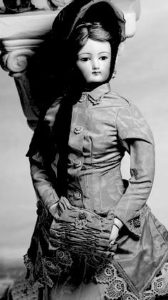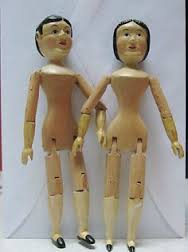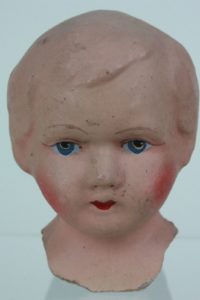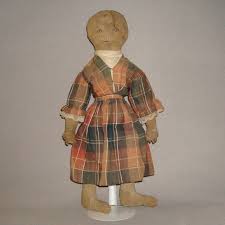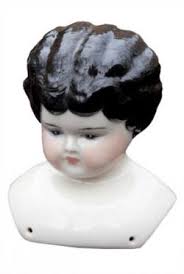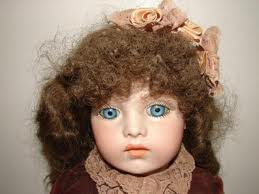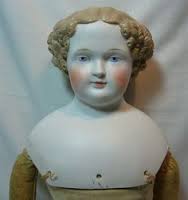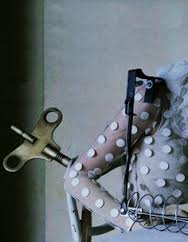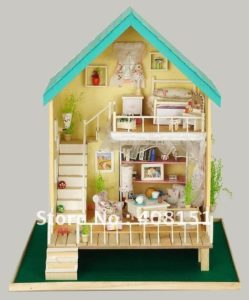DOLL GUIDE
According to Antique Doll Collector magazine there are more than 300 million dolls in the U.S. alone, most of them owned by adult men and women over fifty. In the last forty years doll collection has advanced from an after-work pastime to the most popular hobby in North America and Europe. This is not a comprehensive doll guide by any means. Because many of our clients inquire about various doll types and manufacturers, I decided to list the most popular and valuable dolls for a modern collector.
- FASHION DOLLS
Also known as “lady dolls”, were popular in the late 18th century in Europe. The doll had bisque heads, which could be easily repaired if damaged. Porcelain and bisque doll repair was common at the time; the bodies, however, were made from thin cloth and had to be replaced after considerable wear and tear. The dolls were dressed in whatever was in vogue at the time. Most of the Fashion Dolls were made in France.
- WOOD DOLLS
Wood was the cheapest material centuries ago, and most of the dolls and religious figurines designed for churches and cathedrals were made from wood. Even today there are many examples of peg-wooden dolls (incorrectly called “Dutch dolls”) made in Austria in 18th century; mortise-and-tenon jointed dolls made in the USA. Penny-jointed and fastened with wooden staples and pegs, the dolls had flat faces with longish noses and are said to be among the favorite toys of the Queen of England.
- PAPIER-MACHE DOLLS
Papier-mâché is a composition made from paper pulp and containing oil, resin and other substances. A homemade version of papier-mâché consists of sheets of paper pressed or glued together. Before bisque became the go-to material for sculpting dolls’ heads, most dolls in the 16th to 18th century had papier-mâché heads. Later in the 18th century, papier-mâché became popular in Germany, where most dolls were made using the paper pulp and resin composition.
- RAG DOLLS
Rag dolls were intended as substitute for more costly dolls. “Rag” was first patented in the U.S. by E.S. Peck. Rag dolls were made from remnants of fabric, stitched together and then stuffed. In the middle of 19th century, the term “rag doll” started to take on a pejorative connotation and was slowly morphed into “cloth doll”.
- CHINA HEAD DOLLS
Most people refer to china dolls as “glazed porcelain dolls” (including this doll guide author), and I believe rightly so. But there’s a very clear distinction between heads made from glazed porcelain (china) and unglazed porcelain (bisque). China heads are molded in clay, glazed and fired at a very high temperature. The evenness of the surface’s tone is indicative of the quality and the price. Creamy and pink tones are best. Blue is less so.
A great number of dolls had been produced for almost a hundred years and because of it many dolls that survive today cannot be properly classified according to the system defined by modern collectors. Doll restoration specialists face a problem determining the exact age of the dolls that are over 80 years old and defy classification. Blond hair on china dolls is less common than black, for instance, as swivel-neck heads are much more rare than one piece shoulder heads.
- BISQUE DOLLS
“The main difference between china and bisque,” says Luba Sokolina, the chief restorer at Luel Restoration Studio and one of the sought-after porcelain repair experts in North America, “is very simple. China has high, shiny glaze, which is applied in several layers before firing. Bisque, on the other hand, has a dull, soft-looking flesh-like surface.
Throughout 1800s and well into 1900s, bisque dolls were primarily manufactured in Germany and France. Often the hands and feet were made from bisque as well in order to match the head. There’s a great variety of bisque dolls available today.
- UNTINTED BISQUE DOLLS
A porcelain that resembles marble was a very popular material in the doll-making communities throughout Europe in mid-19th century. It originated in Britain and quickly spread throughout Europe and America. The highly polished, untinted bisque dolls were very popular with the wealthy because they were intended to be objects d’art for fashion and artistic-conscious adults. The dolls sold for high prices and required a lot of maintenance due to their fragile nature.
- FROZEN CHARLOTTES
Also known as “solid china”, these one-piece porcelain doll have no joints, i.e. their bodies are completely solid. They are of indeterminate gender, always slightly overweight, with their arms bent at the elbows, like they’re holding a perpetual grudge. Some collectors insist that there are “Frozen Charlottes” and “Frozen Charlys”. Perhaps they’re right. The name must have come from an old Civil War ballad called “Fair Charlotte”, about a young Charlotte who went out into the winter New England cold to meet her suitor and promptly froze to death.
- MECHANICAL DOLLS
Dolls that move on top of music boxes to those that talk or raise their arms were hugely popular in the 19th century. Some of them had wooden torsos, jointed arms and a mechanism propelling a wheeled cart, causing dolls to move. Other bisque-headed dolls with steel-rod arms had key-wound mechanisms that operated various music boxes, causing the dolls to move their heads.
- MINIATURE DOLLS
Made of practically every material, miniature dolls were usually made for use in doll houses and for display purposes. Most popular were the ones with bisque heads and cloth bodies. They were commercially made in France and Germany in the 19th and early 20th century. Many popular doll houses had a “chauffer”, a “butler” , “mother, father, children, grandchildren”, etc. Collectors looking for detailed information on doll houses should refer to “Inside the World of Miniature and Doll Houses” by B. Rosner and J. Beckerman.
